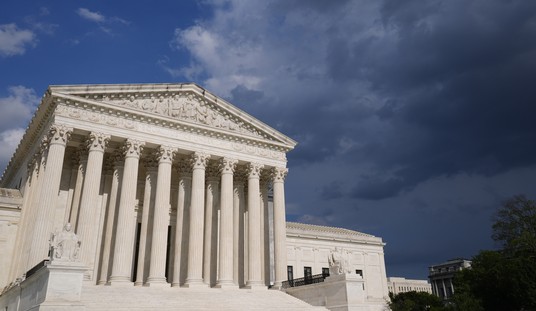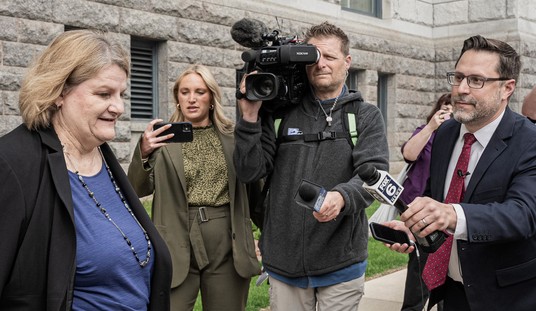The Department of Labor will publish the next monthly unemployment report on Friday, but one early indicator suggests that the White House will need to ramp up its spin. ADP’s report for private-sector job growth in May puts new jobs at just 38,000, down from 190,000 in April (via JWF):
Employment in the nonfarm private business sector rose 38,000 from April to May on a seasonally adjusted basis, according to the latest ADP National Employment Report® released today. The estimated change of employment from March 2011 to April 2011 was revised down slightly to 177,000 from the previously reported increase o f 179,000.
Today’s ADP National Employment Report suggests that employment growth slowed sharply in May. Employment in the nonfarm private-business sector rose 38,000 from April to May on a seasonally adjusted basis.
A deceleration in employment, while disappointing, is not entirely s urprising. In the first quarter, GDP grew at only a 1.8% rate and only about 2¼% over the last four quarters. This is below most economists’ estimate of the economy’s potential growth rate and normally would be associated with very weak growth of employment.
This is no anomaly. It comes as the latest in a long string of economic indicators, all pointing to another economic slowdown. Weekly initial jobless claims have risen for the past several weeks, and it’s hardly surprising to find out that employers have slowed their hiring considerably in May after Q1’s 1.8% GDP report. That didn’t keep Reuters from being surprised, of course:
Private-sector payroll growth slowed sharply in May, coming in far below expectations and falling to the lowest level in eight months, a report by a payrolls processor showed on Wednesday. …
“Obviously a much weaker-than-expected report, hinting that Friday’s nonfarm data will also be weaker than expected,” said Camilla Sutton, senior currency strategist at Scotia Capital in Toronto, referring to the U.S. Labor Department’s monthly non-farm payrolls report due for Friday.
The economy slowed to 1.8% in Q1 and jobless claims have risen over the last seven weeks over the baseline in the first quarter. How far below expectations could this have come?
Unlike Reuters, financial analysts actually pay attention to economic indicators — and have begun to revise their forecasts accordingly:
After a disappointing first quarter, economists largely predicted the U.S. recovery would ramp back up as short-term disruptions such as higher gas prices, bad weather and supply problems in Japan subsided.
But there’s little indication that’s happening. Manufacturing is cooling, the housing market is struggling and consumers are keeping a close eye on spending, meaning the U.S. economy might be on a slower path to full health than expected. …
A growing number of forecasters are downgrading their second-quarter growth predictions.JPMorgan Chase & Co. economists revised down their estimate to a 2.5% rate from 3%, whileBank of America Merrill Lynch economists cut theirs to 2% from 2.8%. Deutsche Bank cut its forecast to 3.2% from 3.7%.
Companies are similarly cautious. Applied Materials Inc., the largest maker of machines used in producing computer chips, said it expected growth in its semiconductor and solar markets to slow following one of its best quarters ever. Hewlett-Packard Co. cut its fiscal-year outlook amid weak computer sales and negative effects from the disaster in Japan. Clorox Co. offered a more guarded outlook for its household goods business as executives noted that higher prices may hurt sales.
The WSJ asks the right question:
The dimming outlook raises a deeper question about the economy’s health: Has it emerged from the financial turmoil of 2008 and 2009 with a chronic growth problem?
Quite obviously it has. We’re now at the second anniversary of the so-called recovery, and Investors Business Daily uses the occasion to answer the WSJ’s question:
But the fact is that the Obama recovery is one of the worst ever. Certainly the worst since the Great Depression. It’s so bad, in fact, that even 24 months after the recession officially ended there are few places beyond the stock market and corporate profits that have shown much, if any, improvement. …
[Republicans] need to hammer home the fact that Obama’s growth-smothering policies are solely to blame for the economy’s two-year rut. Then they must focus on clearly needed pro-growth tax cuts and regulatory relief to turbocharge the private sector.
Obamanomics is a disaster, and the debt it’s creating is only part of the reason why we’re not growing two years after the end of the recession. Obama’s regulatory adventurism and crony capitalism has capital running for cover — and as long as that keeps happening, the US economy will remain moribund.








Join the conversation as a VIP Member